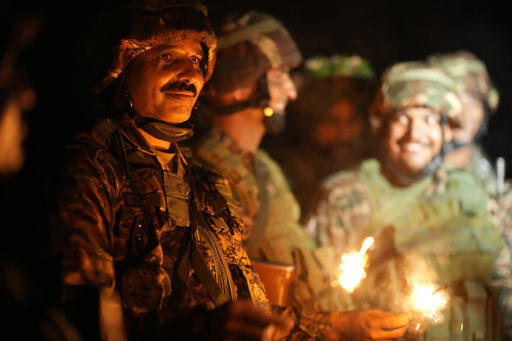
NEW DELHI — On Friday, a dense blanket of hazardous smog enveloped the Indian capital, primarily due to emissions from firecrackers ignited in celebration of Diwali, the Hindu festival of lights. This sharp increase in air pollution has elevated the air quality index in New Delhi to a “severe” classification, as reported by SAFAR, the principal environmental monitoring agency in India. In numerous regions, concentrations of harmful particulate matter soared to seven times above the safety threshold established by the World Health Organization.
Since 2017, authorities in New Delhi have prohibited both the sale and use of conventional firecrackers, encouraging citizens to opt for more eco-friendly alternatives or organized light shows. However, compliance with this regulation remains a challenge, as many individuals continue to disregard the ban.
With a population exceeding 33 million, New Delhi frequently ranks among the world’s cities with the worst air quality. The pollution crisis tends to worsen in the winter months, as the burning of agricultural waste in surrounding states coincides with cooler temperatures, which trap toxic smoke in the lower atmosphere. This smoke then drifts into New Delhi, exacerbating pollution levels and intensifying public health concerns.
Furthermore, emissions from industries that lack adequate pollution controls and the reliance on coal, which accounts for a significant portion of the nation’s electricity, have been identified as contributing factors to the deteriorating air quality in urban areas.
One resident, Manoj Kumar, who enjoys running near the renowned India Gate, remarked, “We may not realize it now, but later we will face lung problems.”
Research has suggested that over one million individuals in India succumb each year to diseases related to air pollution. Fine particulate matter present in contaminated air has the potential to enter deep into the lungs, leading to various severe health complications.
